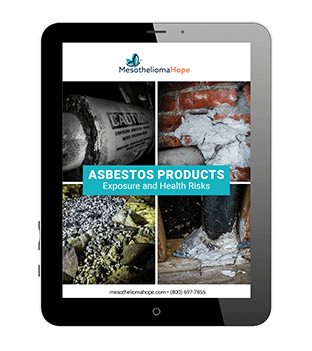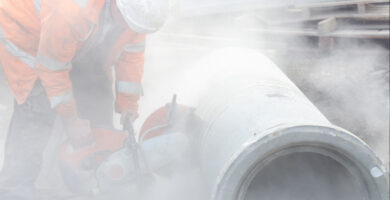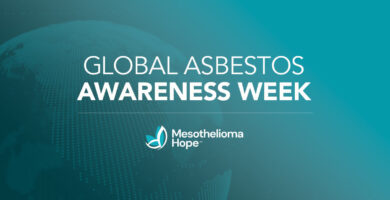The Food and Drug Administration revealed March 5 that select makeup products sold by Claire’s and Justice contained asbestos, according to a USA Today report.
This announcement comes on the heels of reports dating back to 2017 that previously found asbestos in some of the companies’ products, which are branded to pre-teen girls.
According to the FDA, the following products contain a dangerous amount of asbestos:
- Claire’s Eye Shadows – Batch No/Lot No: 08/17
- Claire’s Contour Palette – Batch No/Lot No: 04/17
- Claire’s Compact Powder – Batch No/Lot No: 07/15
One makeup product previously sold by Justice also contained asbestos.
According to USA Today, Claire’s has stopped selling the makeup products in question and plans to remove any other talc-based products. The company also said it would accept returns of products that contained talc.
However, the company denies that its products are dangerous and says the FDA’s findings were inaccurate.
Claire’s also refused to issue a recall for the products in question, according to the FDA’s official press release.
The Messy Nature of Makeup Companies
This is not the first time that Claire’s and Justice have come under fire.
Here is a timeline of selected asbestos-related reports brought against these companies:
- September 2017: Reporters from ABC 11 in North Carolina have Justice’s “Just Shine Shimmer” powder analyzed by scientists. The product is found to contain trace amounts of asbestos. In response, Justice recalled a total of 8 cosmetic products from stores, according to the FDA report.
- December 2017: Claire’s stopped selling 9 makeup products as a “precautionary measure,” according to the company’s Twitter account, after a WJR TV report found that 17 products tested positive for asbestos. The company asserted that it will test the products in question for safety.
- January 2018: Claire’s announced on its official site that two independent labs analyzed the products and found that they were asbestos free. The company added: “Any report that suggests that the products are not safe is totally false.”
- March 2018: The U.S. Public Interest Research Group releases rea report in which labs found asbestos in 3 Claire’s products: its contour palette, its shadow and highlight finishing kit and its compact powder. The company said that the testing methods were “obsolete and unreliable,” and said that it had cooperated with numerous government agencies—including the FDA—to ensure that its products were safe.
However, in the wake of these allegations, the FDA began its own investigation into the concerning products.
“Because the 2017 testing was done by third-party laboratories, the agency believed it was important to scientifically confirm that these reports were accurate,” the FDA said in a press release.
In its press release, the FDA noted that the makeup product sold by Justice had not been available to consumers since the September 2017 recall. However, the 3 Claire’s products were still being sold to consumers
Claire’s filed for—and successfully emerged from—Chapter 11 bankruptcy in 2018, shedding over $1 Billion in debt, according to the New York Times.
USA Today reports this restructuring means consumers cannot pursue asbestos-related lawsuits against the company.
Talc, Asbestos and Consumers
Asbestos fibers are sometimes found in powdered talc, which was once commonly used in baby powder, makeup and deodorant. Talc naturally absorbs moisture, so it helps prevent powdered makeup from caking.
Talc is a naturally occurring mineral, but asbestos may sometimes be found near or alongside it. Asbestos is a highly durable mineral, but if it humans inhale asbestos fibers they can develop serious diseases like cancer.
Small amounts of asbestos can sometimes contaminate talc during the mining process, meaning that talc-based products could be laced with a cancer-causing material.
Despite this, some major companies still use talc today despite public criticism. Outside of Claire’s, Johnson & Johnson has faced backlash after the company’s baby powder was linked to asbestos through recent lawsuits and news reports.
Next Steps for Parents
Children who use makeup that contains asbestos are being placed in serious danger. It takes anywhere from 10 to 50 years for asbestos-related diseases to appear and many of them—including mesothelioma and lung cancer—are deadly.
Being exposed at such a young age can rob your children of their future.
It is largely on parents to keep their children safe. According to the FDA, existing laws do not require cosmetic products to be regulated before they are sold to the general public.
The FDA can also not ban or force a recall of cosmetic products, even when the branch has found the products could put lives at risk. In their press release, the agency called on cosmetic companies to register their products and report issues with them through FDA-sponsored programs.
The best way to determine whether your child is at risk is to look at the ingredients of their cosmetic products. To play it safe, a good precaution is to avoid makeup that uses talc. Even though not all talc-based products have asbestos, there is still a chance that trace fibers could be present.
If your child has used talc-based or asbestos-containing makeup and you have concerns about their long-term health, take them to a doctor.










